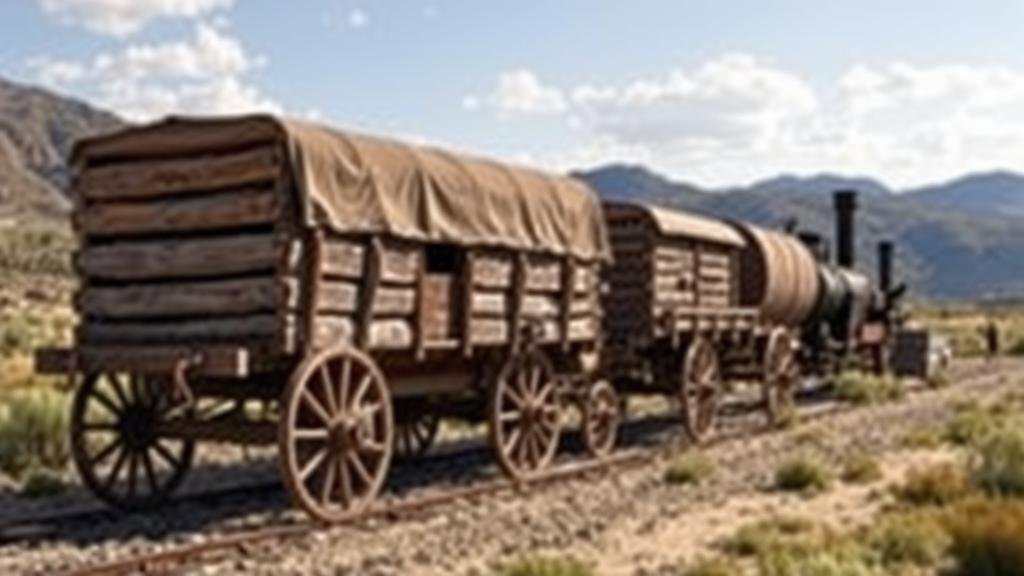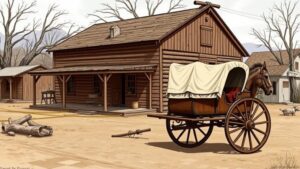Mining Wagon Train Logs for Relics Lost Along Pioneer Trails
Mining Wagon Train Logs for Relics Lost Along Pioneer Trails
The American West, during the mid-19th century, was the site of a massive migration of settlers, traders, and pioneers seeking new opportunities. These individuals traveled in wagon trains along various trails, including the Oregon Trail, California Trail, and Santa Fe Trail, leaving a trove of artifacts and historical records in their wake. This research article aims to explore the practice of mining wagon train logs to uncover artifacts lost along these historic trails, focusing on the methodologies, findings, and implications for our understanding of pioneer life.
Historical Context of Pioneer Trails
The westward expansion of the United States was driven by various factors, including economic opportunity, land availability, and the idea of Manifest Destiny. Between 1840 and 1860, it is estimated that over 400,000 people traveled the Oregon and California Trails alone (Anderson, 2014). These rugged journeys often resulted in the loss of personal belongings and other artifacts, creating an archaeological landscape rich for exploration.
Understanding Wagon Train Logs
Wagon train logs, often kept by leaders or important members of the group, served as vital records of the journeys undertaken. These logs document travel routes, encounters with Indigenous peoples, instances of disease, and notable events along the paths. are essential historical documents that provide context for the conditions faced by these pioneers.
- Log types include daily journals, financial records, and maps.
- Notable records have been found from the Hastings Cutoff, a path taken by many in the 1840s that was later deemed perilous due to dehydration and difficult terrain.
Methodologies in Mining Logs for Artifacts
The process of mining wagon train logs for artifacts typically involves several methodologies, including textual analysis, spatial analysis, and field excavation. Each method contributes to a comprehensive understanding of the pioneer experience.
- Textual Analysis: Scholars conduct detailed examinations of log entries to identify patterns and common experiences among wagon trains.
- Spatial Analysis: Geographic Information Systems (GIS) technology is employed to visualize the routes taken and correlate them with known archaeological sites.
- Field Excavation: Targeted digs in areas identified through logs often recover items such as tools, personal items, and even remnants of the wagons used.
Significant Findings and Discoveries
Artifacts recovered from the trails provide invaluable insight into the daily lives of pioneers. For example, numerous sites along the Oregon Trail have yielded significant finds, such as:
- Metal tools, which reveal information on the craftsmanship and technology of the time.
- Personal items like letters and diaries that offer a glimpse into the emotional and social aspects of pioneer life.
- Remains of wagons that highlight the physical challenges faced during these arduous journeys.
In 2007, a significant excavation at a site in Fort Kearny, Nebraska, uncovered over 3,000 artifacts dated between 1847 and 1850, including coins, metal tools, and household items (Hagner, 2009). Such finds underscore the importance of these historical records and their role in modern archaeology.
Implications for Historical Understanding
The practice of mining wagon train logs and recovering artifacts contributes profoundly to our historical knowledge. These endeavors allow historians and archaeologists to develop a multidimensional picture of the pioneer experience, emphasizing various aspects:
- Demographic Diversity: Analysis of names and backgrounds mentioned in logs reveals the multicultural makeup of pioneer groups.
- Social Dynamics: Letters and diaries help scholars understand interpersonal relationships and the emotional toll of migration.
- Evolving Technology: The tools and techniques found convey the progression of technologies in response to environmental demands.
Conclusion
Mining wagon train logs for relics lost along pioneer trails is a compelling field of study that interconnects historical documentation with archaeological evidence. By thoroughly analyzing these logs and excavating related sites, researchers can uncover not only tangible artifacts but also the complex narratives of those who traversed the treacherous landscapes of the American West. Future endeavors should aim to integrate emerging technologies, such as machine learning, to enhance the analysis of historical records further.
As we embrace a renewed interest in the pioneering period, it is vital to continue dialogue between historians and archaeologists to fully appreciate the sacrifices and experiences of the individuals who ventured into the unknown.
References:
- Anderson, M. (2014). The Frontier Life: Pioneer Trails and Overland Travel. University of Kansas Press.
- Hagner, R. (2009). Excavations at Fort Kearny: A Repository of Western Migration. Nebraska Historical Society Publications.


